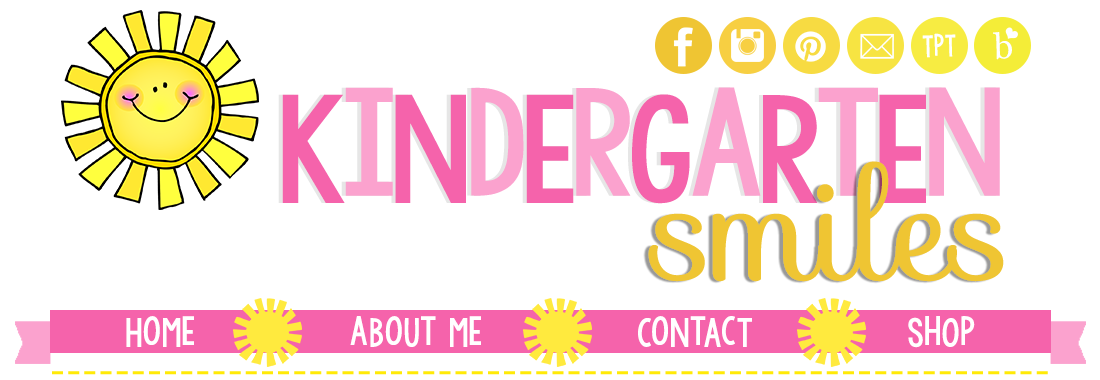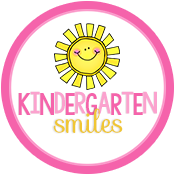I have been so busy lately that I haven't had a chance to share my thoughts on the last couple of chapters in the Freebielicious summer book study! I did finish reading The Next Step in Guided Reading and really enjoyed it. I am looking forward to using a lot of it in my classroom this year--especially the Pre-A and Emergent reading suggestions.
Some of my favorites already shared their thoughts on Chapters 5 and 6 and you can read those below:
Chapter 6 HERE at First Grade Blue Skies
In Chapter 5, Jan Richardson suggests having students use a personal word wall. Keep in mind, this chapter discusses students that are 'transitional readers'. So this is for kids that are already reading and they are now concentrating on vocabulary and fluency. This is not something that I have done in class before, but would be interested in trying it out. My class word wall is placed on my biggest bulletin board in the back of the room for all to see and use. My students have had problems in the past locating specific words on the wall (but these are typically my 'lower' students). But, I wouldn't mind trying this out!! It couldn't hurt, right?! ;)
You can grab the word wall by clicking on the image above. I think they would work great glued inside a manilla folder.
During a transitional reading group, you will want to spend the first 3-4 minutes discussing the book. Point out important images or new concepts. Then you will want to move on to discussing new vocabulary words. If the word is defined in the text, then don't tell them the definition. If it is not defined in the text, then give them a simple definition, connect it to the text and to their background knowledge. Lastly, which is my favorite thing to do, have the students turn and talk to each other about the definition. I always clap my hands two times and say 'teach'. Then, the kids clap their hands two times and say 'okay!' I love it!!! For the next 10-15 minutes students will read the book independently. During this time, you will conference individually with students. You can work on fluency, comprehension, characters, etc. Keep track of who you met with since you may not work one-on-one with everyone. For the last 1-2 minutes of the reading group, you can choose a strategy that you want to work on with all of your students. They may beed to do a word study where you focus on digraphs or even the silent e rule!
On the second day (or when the book is finished being read) of a transitional reading group you will spend 15-20 minutes doing a guided writing portion. Their writing should be a response to the book they read. It is great to use the 'Five Finger Retell'. You can grab your copy below.
Alright, if you are still with me, let's move on to Chapter 6: Fluent Guided Reading Lessons :)
Spend the first 3 to 4 minutes of this group doing the same as you would with your transitional readers: preview the book and discuss new vocabulary. Keep in mind that you will not tell students the definition if the text provides it. (I use this same exact idea when I do whole group vocabulary).
For the next minute, introduce and demonstrate the focus strategy. This way the students will know exactly what their goal will be. They will spend the next 10 minutes reading silently to themselves. No round robin reading <----totally guilty of this! While the students are reading, you will meet with individuals to discuss vocabulary or comprehension.
When students are done reading, you will come together again for a 5 minute discussion/teaching point. You can ask students about challenging words and you can even add new words onto their 'new word list'. This list can be kept in their guided writing journals for access during guided reading groups. Click below for your 'New Word List' copy.
If you still have time, you can start your guided writing portion. If not, you can save your guided writing portion for the following day. During this time, students will write a response to the text with a comprehensive focus.
Some options for guided writing with a fictional text:
-Character Analysis: Students will choose one character and write about their traits using examples from the text.
-I Poem: Students select a character from the story and write a poem from the character's point of view (I am ____, I wonder ____, I see ____, etc)
-Alternate Ending: Students will write a paragraph describing a different way the text could have ended.
Some options for guided writing with an informational text:
-Chapter Summaries: Each student selects one chapter from the
table of contents and writes a paragraph that describes the most
important information she/he learned in that chapter
-Compare/Contrast: If the text structure is description, students
could select two topics and write a paragraph that compares
the ideas and one that contrasts them. They could compare and
contrast two animals, two landforms, etc. (whatever matches the information in the text).
-Main Idea/Details: Students will write a paragraph that uses details and examples from the text to describe the main idea.
Believe it or not, I am working on my Guided Reading Pack: Part 2. This pack will be useful for Emergent Readers :)

















I'm going to use the personal word wall for me in my planning binder. It will allow me to keep all our words close by to plan if I'm not in my classroom. I have K so I would have to modify it, if I gave it to my kids. THANKS!!
ReplyDeleteThanks for the freebies! I can't wait for Part 2 to be ready! :)
ReplyDeleteI am sooooo excited for your Guided Reading Pack 2! Most of my kids are ready for emergent texts by November (We already started this week.), so I'm looking forward to using your pack pretty soon! :)
ReplyDeleteBreanne
breannesimons@gmail.com
You are an awesome inspiration! I love your personal word wall, and I definitely think I will use it for my students! Thanks so much for your analysis and for sharing your hard work!
ReplyDeleteKaitlin, I use a modified idea of the personal word wall that works for K5. Our word wall sheets have a list of sight words included under each letter and then blanks for personal words that they may need. It's printed back to back on cardstock. We don't begin using these until after Christmas when the kids really begin to write full sentences and use the word wall. During Writing Workshop they refer to their sheets and we write in special words that they need like family names or brand names. They often go back to using these words frequently because they love the subjects. I need to find the time to update mine!
ReplyDeleteDonna Williams
darryl40w@att.net
Love your cute version of the 5 Finger Retell! Thanks for sharing!
ReplyDelete:) Tamra and Sarah
First Grade Buddies
I am SOOOO excited about your Part 2 packet!!!!
ReplyDelete❀Jodi
Fun In First
Thanks for the freebies! I'm a new follower and love your blog!
ReplyDeleteAshley
Rockin' in Resource Room
Thanks and looking forward to your new guided reading pack
ReplyDeleteJulie :-)
Mrs Stowe's Kinder Cottage
Teaching grade 2/3, I made Word Wall books years ago. I had sheets similar to your above and I filled them in with sight words, commonly asked for words etc. Then I pasted them inside a manilla folder with a cover and laminated. After that I taped a blank sheet on top for the kids to ask for a word. If they were editing, they looked through the list first, then brought their word wall book to ask for help with spelling. The best thing about laminating them, is I collect them each year and I only have to replace the blank sheet and put a new name sticker on the front. I also had a word wall up on my walls as well
ReplyDeleteThis comment has been removed by the author.
ReplyDeleteWhat font did you use for the finger labels on your 5-finger retell? I'm going to re-label "Ending" as "Solution" for my kiddos. :) Thanks!
ReplyDelete